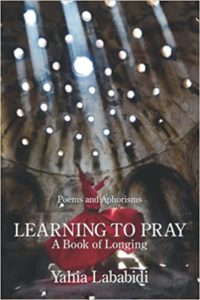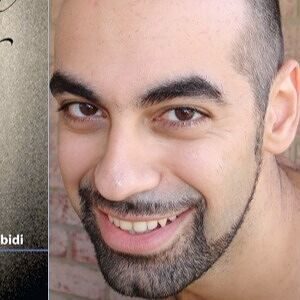Yahia Lababidi asks an eternal question
In his introduction to Learning to Pray: A Book of Longing, poet Yahia Lababidi writes that he’d been considering a book of prayerful writing, or “unconscious spiritual autobiography,” for some years. “For some,” he says, “poetry is how we pray now.” With organized religion in decline, and a plethora of substitutes ranging from cults to political parties offered in its place, Lababidi asks a question that many of us are asking. We can fill our stomachs with food and our lives with stuff, but how do we fill the vacuum in our hearts?
He is raising questions that have been asked for millennia; the biblical book of Ecclesiastes is some 3,000 years old, and it asks many of the same questions Lababidi is raising in Learning to Pray. And it is written in a poetic form, too, suggesting that the questions asked in 1000 B.C. are not unlike the questions being asked in 2021 A.D. Consider this poem in the collection.
Summary

the knees designed to bend
the body created to pray.
What else is there to say?
The mouth was shaped to gasp
the eyes drawn to attend
the soul commanded to obey.
What else is there to say?
The memory was wired to lapse
the heart fashioned to rend
the will inclined to betray
What else is there to say?
Lababidi considers the purpose of a human being, and how that human being always seems to fall short. After reading this poem, I wondered if the author of Ecclesiastes was right, and life is all simply a chasing after the wind.

Yahia Lababidi
That’s what his poems do. They raise age-old, fundamental questions, questions that cannot be answered easily or glibly. Whether he’s considering hope, the pandemic, the role of the poet, the function of words, or elements of nature like a bird, a sunset, or a storm, he’s always asking these questions about life, purpose, the human heart, and the human soul.
Lababidi is a poet, writer, essayist, and aphorist (Learning to Pray includes a section of aphorisms, a writing and philosophical form of which he is a master). His poetry collections include Fever Dreams (2011), Barely There: Short Poems (2013) and Balancing Acts (2016). Also in 2013, he published a collection of essays, Trial by Ink: From Nietzsche to Belly Dancing. A series of conversations in 2012 with his friend Alex Stern were collected as a book, The Artist as Mystic: Conversations with Yahia Lababidi. In 2020, he published a collection of aphorisms, Signposts to Elsewhere.
Learning to Pray offers many lessons, and “offers” is the operative word. We’re not being lectured here, with moral instruction as the ultimate and hidden goal. Instead, we’re invited to think, to examine, to consider, and to reflect. Lababidi knows that his own experience won’t be duplicated with our own, but he can describe how he went about his own spiritual consideration, a process that is ongoing. Learning to pray is not the same thing as praying.
Related:
Wisdom Literature: The Aphorisms of Yahia Lababidi
Photo by Raychel Sanner,, Creative Commons, via Flickr. Post by Glynn Young.
How to Read a Poem uses images like the mouse, the hive, the switch (from the Billy Collins poem)—to guide readers into new ways of understanding poems. Anthology included.
“I require all our incoming poetry students—in the MFA I direct—to buy and read this book.”
—Jeanetta Calhoun Mish
- Poets and Fables: Steven Flint and “The Sun and the Boy” - July 3, 2025
- Poets and Poems: Alison Blevins and “Where Will We Live if the House Burns Down?” - July 1, 2025
- Poets and Poems: Paul Pastor and “The Locust Years” - June 26, 2025


Leave a Reply